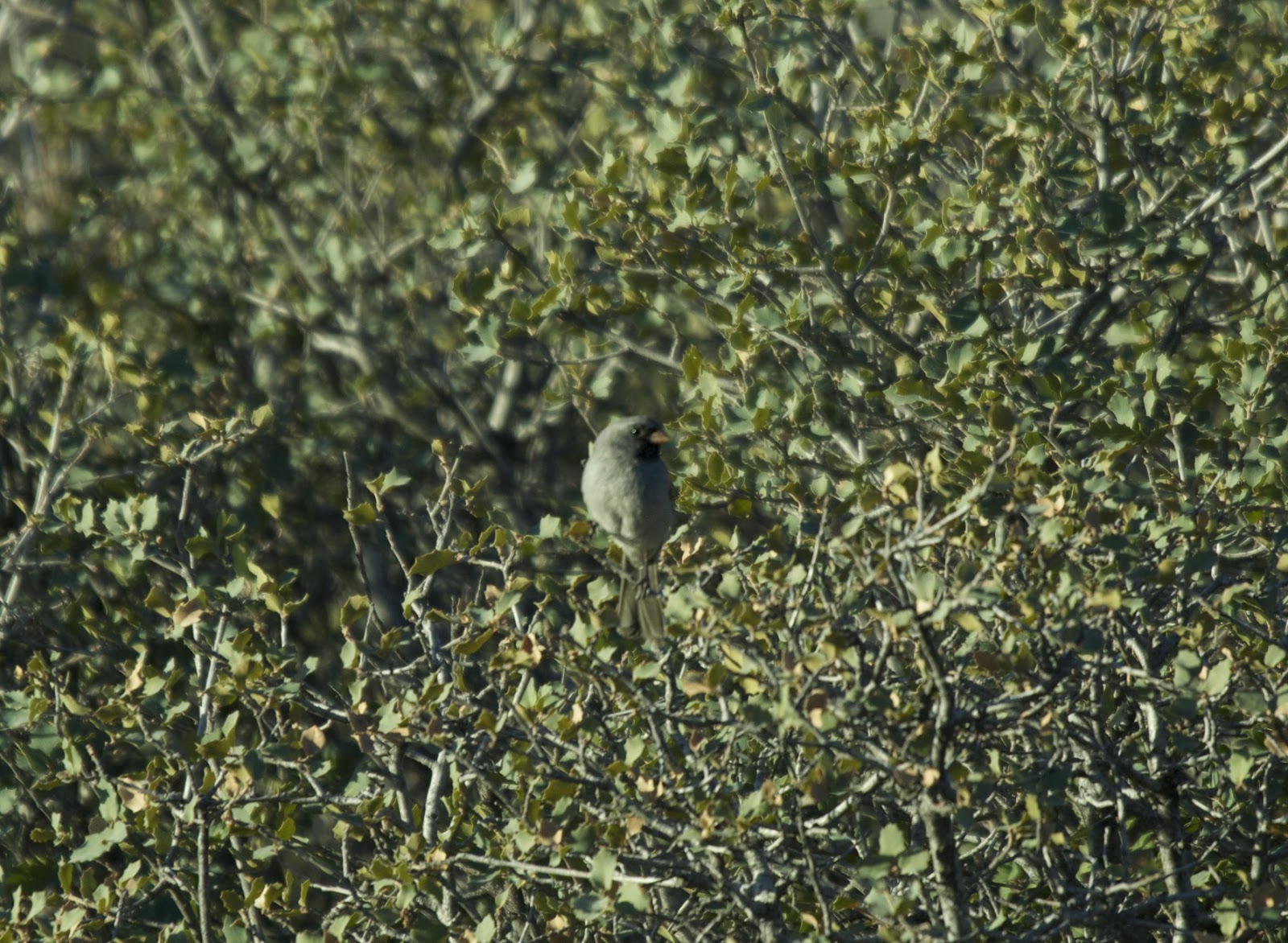The Prescott area, about an hour and a half northwest of Phoenix, is home to some diverse birding habitat situated between 2,000 to 6,000 feet. The higher elevation draws in plenty of birds that are far less common in Maricopa County, and it also offers a general reprieve from Phoenix birding which can, like anywhere, get repetitive. On Friday I went chasing up Grapevine Creek in the Bradshaw Mountains after an annual AZ vagrant, the Varied Thrush. I have dipped on this bird three times before, so it's becoming a bit of a nemesis for me and a beautiful one at that.
The sparse mountainside habitats may not look like ideal habitat--and truth be told they aren't for Varied Thrush--but the the real treasure offered at Grapevine creek is the shady riparian wash nuzzled in between the hills, with water, shade, juniper, and fir trees.
The dirt road up towards the creek becomes inaccessible by vehicle a good mile or so from the creek trailhead, which forces the intrepid birder to traipse through elevated desert chaparral. This unique habitat, comprised of desert holly, saltbrush, scrub oak, juniper, and manzanita, offers up its own birding delights, and this was just as well since--spoiler alert--the Varied Thrush remains an inchoate nemesis.
The morning walk along Grapevine road, though very chilly, was filled with emberizid noises. Black-chinned Sparrows were the main culprits, but White-crowned, Rufous-crowned, and Black-throated also made their contributions, as did a plethora of Spotted Towhees.
A little pishing and a little playback can get all kinds of things stirred up in these bushy surroundings. The whole neighborhood was buzzing and among all the Sparrow happenings I almost missed a pair of Crissal Thrashers (not photographed, of course) gathering food for a nest.
I picked up my first 2014 Black-chinned Sparrows just last week near Mt. Ord, but during a time crunch. While waiting for the sun to crest the mountains and illuminate the creek trail I was able to crush them more properly along Grapevine road, much to my satisfaction.
The Black-chinned below (not crushed, just circumstantial) is perched on one of my favorite chaparral scrub bushes, manzanita. What? You don't have your own favorite chaparral bush? Lame.

The manzanita have rich verdancy in their evergreen leaves and a smooth, reddish bark running along their gnarled branches. They show resilience, color, and texture in a remarkable way, especially amidst the predominantly homogenous, grayish-green backdrop of their surroundings.
Nearer the creek and in the shaded valley between the Bradshaws, ponderosa pine and juniper come to dominate the scene, with scrub oak and the occasional fir trees, as well as cottonwoods also growing nearer the water. From looking down into the bushes one must look up into the busier canopy. Bushtits and Kinglets bounce from limb to limb, creating a false impression of how numerous they are with their raucous, kinetic behavior. They make up the basis of solid mixed flocks that Goldfinches, Chickadees, Titmice, and Vireos also join, while White-breasted Nuthatches and Brown Creepers lurk on the periphery and wallflower Hairy Woodpeckers wait for an invitation (or not).

Hutton's Vireos are kind of a dull bird, but they have my undying appreciation in the month of March for being something admittedly kingletty that is not a Kinglett. They were very vocal in the scrub oak along the creek trail, showing more personality than their generic appearance otherwise indicates.


As such, the Varied Thrush chase did not get underway to full satisfaction, but Grapevine Creek has some great potential as a birding spot. The changing habitats alone provided me with 40+ species in about three and a half hours, and the creek itself offers the right settings for an uncommon and delightful little bird.

Big tangles and brush piles along the water aren't just appealing to rodents. All the while walking the creek I had eyes and ears pealed, eventually picking up that anticipated call note of a Pacific Wren, the little bird with a big chip on its shoulder, struggling to forge a separate identity from Winter.
These Wrens can be as amazingly gregarious and they are amazingly small. It almost flew up and landed on my foot when I was pishing, which resulted, rather cruelly, in me being unable to properly focus on the oddly proximal bird before it again vanished into its twiggy labyrinth.
Grapevine Creek isn't the most easily accessible hike--several miles of choppy dirt road and some occasionally steep/loose hiking, but it certainly is birdy. That's also true of many other trails in the Prescott area, even though this site is closer to anyone heading north from Phoenix.
No luck, again, with the Varied Thrush. I'll just have to quit being lazy and go find my own some time.






